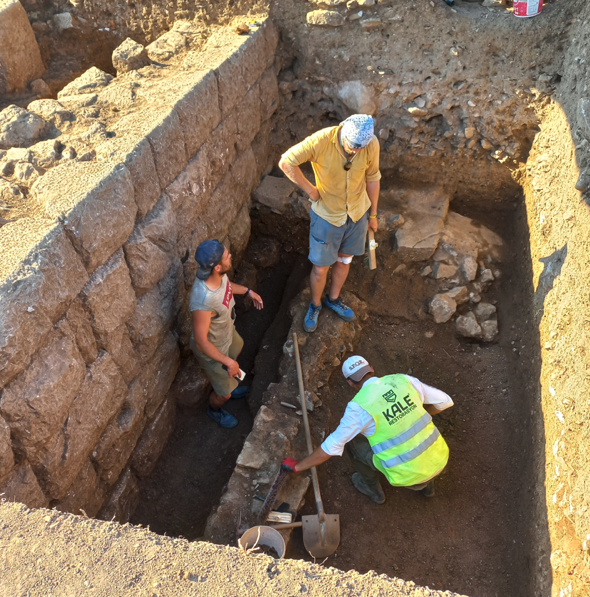Parion
Parion, Région de Çanakkale, Turquie
La ville grecque de Parion est située sur la rive sud de la mer de Marmara (Turquie). C'est l'un des principaux centres urbains de la Troade, fondé à la fin du 8e siècle avant J.-C. et existant jusqu'au 12e siècle de notre ère. Les fouilles de Parion sont menées depuis 2005, actuellement sous la direction du professeur Vedat Keleş de l'université Ondokuz Mayıs (Samsun, Turquie). Depuis 2021, les fouilles de la zone centrale (secteur « Agora ») ont été confiées à une équipe internationale dirigée par Askold Ivantchik sur la base d'accords de coopération avec l'Université Bordeaux Montaigne et l'Université HSE (Moscou).
Le sujet des recherches est la zone de l'agora, le centre administratif, religieux et économique de la ville. L'histoire du développement de cette zone peut être retracée du 4ème siècle avant JC au 11ème siècle après JC. Elle représentait à l'origine le principal espace public de la ville. Plus tard, les bâtiments publics ont été abandonnés et le site a été recouvert par une zone résidentielle. Le passage d'un usage public à un usage privé du centre ville a constitué un changement majeur dans l'organisation de l'espace urbain lors de la transition entre l'Antiquité et le Moyen Âge. Le but de nos recherches est d'établir les limites exactes de l'agora qui ne sont pas encore connues, le caractère des bâtiments qui s'y trouvaient, ainsi que leur chronologie, les raisons de leur abandon et l'histoire du développement ultérieur de cette zone.
Depuis 2022, les fouilles du secteur « Agora » sont financées par le Grand Programme de Recherche « Human Past ». Les fouilles de Parion apportent un éclairage nouveau sur la problématique de l'identification des tournants dans l'organisation de l'espace urbain de la polis grecque, notamment l'apparition et la disparition des espaces publics, leur organisation et leur relation avec les espaces privés.


The Greek city of Parion is located on the southern shore of the Sea of Marmara (Turkey). It is one of the main urban centres of the Troad, having been founded at the end of the 8th century BC and existing until the 12th century AD. The excavations of Parion have been carried out since 2005, currently under the direction of Prof. Vedat Keleş from the Ondokuz Mayıs University (Samsun, Turkey). Since 2021, the excavations of the central area (“Agora” sector) have been entrusted to an international team directed by Askold Ivantchik on the basis of co-operation agreements with the University of Bordeaux Montaigne and HSE University (Moscow).
The subject of the researches is the agora area, the administrative, religious and economic centre of the city. The history of the development of this area can be traced from the 4th century BC to the 11th century AD. It initially represented the main public area of the city. In later times, the public buildings were abandoned and the site was covered by a residential area. The shift from public to private use of the city centre was a major change in the organisation of urban space during the transition from Antiquity to the Middle Ages. The aim of our research is to establish the exact boundaries of the agora that are not yet known, the character of the buildings that stood there, as well as their chronology, the reasons for their abandonment and the history of the subsequent development of this area.
Since 2022 the excavations of “Agora” sector are funded by the Grande Programme de Recherche “Human Past”. Parion excavations shed new light on the problem of identifying turning points in the organisation of urban space in the Greek polis, including the appearance and disappearance of public spaces, their organisation and relationship with private spaces.
Researcher Contact
Askold Ivantchik, Ausonius

